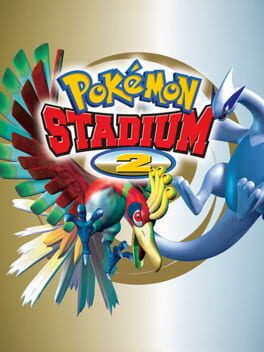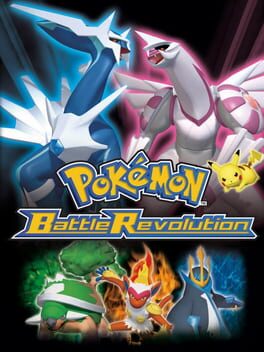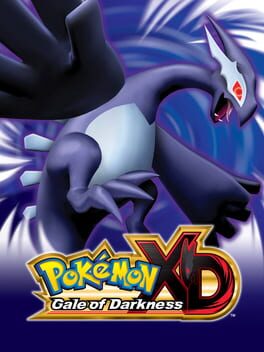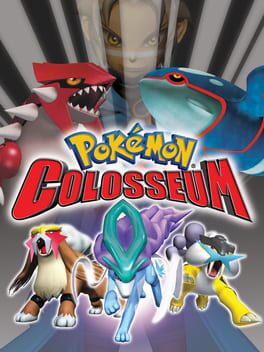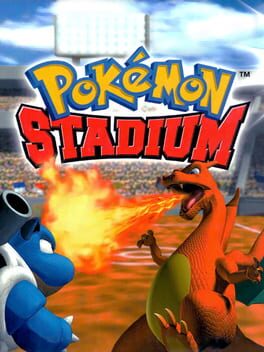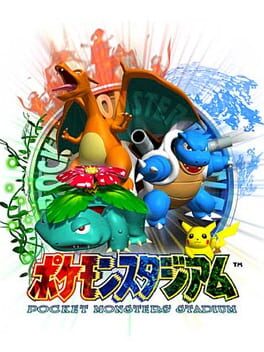

While Pokémon Stadium 2 does have a storyline, progress in the game can be made by winning Cups in the Stadium and completing the Gym Leader Castle. When all Cups have been won and the Gym Leader Castle completed, the player's Rival will appear. Defeating the Rival will unlock Round 2, in which the player must re-challenge the Stadium, Gym Leader Castle, and the Rival in order to complete the game. But, they have different Pokémon and the difficulty is much higher. Stadium: The player begins by choosing 6 different Pokémon. There are 250 different Pokémon to choose from; including some legendary Pokémon. Pokémon tournaments take place in the Stadium. There are four Cups to participate in. Each round consists of eight battles, and every Cup except the Little and Prime Cup consists of four rounds, named after Poké Balls, that must be cleared to win that Cup.
Also in series
Released on
Genres
Reviews View More
There really isn’t any story to speak of for any Pokemon Stadium game. They’re really just Pokemon battle simulators that have a bundle of single-player content as well as a free battle mode along with some mini-games if you’re hanging out with your friends and want something fun to do. The battle mechanics for those multiplayer modes are also very clever. Your moves and Pokemon are actually hidden behind what are effectively spoiler windows unless you decide to show them, so your opponent has no idea what Pokemon or moves you’re picking despite the fact that you’re both using the same screen to play. Up until this point, the most time I’d actually spent with this game was by far concentrated in the mini-games, and while they’re indeed really fun, they’re never gonna help you reach the credits XD.
As far as the single-player content goes, you have two main areas: the Gym Leader Castle and the Stadium. You’ll need to clear all of both areas to see the credits, and there’s actually an even harder version of everything you can unlock after the credits, but beating the first round of content was so hard, I had no intention of playing the second round if I had already reached the credits XD
In the Stadium, you have four tournaments, with two of those having four divisions (for a total of ten cups of eight battles you’ll need to clear to win this). You have the four divisions (which are basically difficulties) of the Nintendo Cup, which is any Pokemon allowed from levels 50-55. Then there’s the Little Cup, which is only Pokemon of level 5. There’s the Ultra Cup, which is Pokemon leveled 1 to 100 ( though all of your competitors have only level 100 Pokemon). Finally, you have my personal favorite, the four divisions of the Challenge Cup, which is basically a card draft type of tournament. You’re given a random team of six Pokemon, and it’s your job to try and use them to win the next eight battles with them. That one is great fun!
I trained up my own team to beat the Nintendo Cup, and then I had to use rental Pokemon (ones the game pre-provides for you to use, but are generally less good than any team you’d properly prepared yourself) for the Little and Ultra Cups. Those last two were easily the hardest and roughest parts of the game and not only because I had to use rental Pokemon. It’s largely because, if I hadn’t, grinding up a suitable team for both would’ve taken untold hours of work, and I had no interest in doing that. By and large, the stadium section is really good fun for the fun parts while being pretty miserable in the worse parts due to the RNG that’s required to win. Granted, that goes for any time you’re going to be using rental Pokemon in this game, but the Little Cup having so little room for error (as you’re all basically minimum level) means that it’s mostly an exercise in getting lucky enough to win no matter how well prepared you are.
The Gym Leader Castle is exactly what it sounds like, for the most part. You have the eight gym leaders from Johto as well as the Elite Four + Champion in little mini-gauntlets, and beating the gauntlet will clear the stage. There are two or three normal trainers before the gym leader themselves, but those trainers are usually so easy that they feel like something of a waste of time before the actual challenging gym leader. There are even the Kanto gym leaders to fight afterwards, but they’re generally a lot easier and also have no gauntlets to go through. This ends up making it feel very much indeed like playing actual generation 2 Pokemon, where Johto is the actually challenging part, and your run through of Kanto is more like a victory lap XD.
Unlike in the stadium cups, where beating a round without having any Pokemon get KO’d gives you a continue to use if you fail, there are no continues in the Gym Leader Castle, so it can be pretty unforgiving. The one nice thing about the Gym Leader Castle is that you can use whatever Pokemon you like in terms of both actual Pokemon as well as their respective levels. The AI trainers you fight against all have Pokemon of the same level as your highest Pokemon, so just bringing in a team of level 50 Pokemon (likely even the same ones you’re using for the stadium’s Nintendo Cup) makes this a very fun and challenging trial to overcome.
Overall, the single-player content’s design is a very mixed bag. If you’re using rental Pokemon, winning is often simply down to just getting lucky enough. That then goes double for the more poorly designed tournaments like the Little Cup. Even if you’re using a team you trained up yourself, just getting unlucky can mess you up way harder than in normal Pokemon games, as these games actually mirror official tournament rules in that you don’t get a choice to swap out Pokemon when you KO one of your opponent’s Pokemon. Another very annoying difficult spike is from how you bring a team of six, sure, but then you choose only three of them to actually battle with (and so does your opponent). This means you can have an immaculate team prepared, but since you just got unlucky with your three picks verses what your opponent picked, you’re super dead anyhow.
Pokemon is always a game of luck, to no small degree, so this stuff admittedly does go with the territory. Picking unluckily can screw over your AI opponents just as much as it can with you, of course, though I’m not about to admit that they don’t cheat sometimes here and there in knowing what you’re going to do before you do it. Team building is also fun, but it’s also very strategic. This is tournament rules Pokemon, and if you’re going to build your own teams in the GameBoy games, you need to build teams to win, not just ones with Pokemon you like (because the AI is absolutely here to win, no bones about it ^^; ). If that’s your kind of deal, then the single-player content here will likely be a good and challenging time, but if this all sounds dreadful, then it’s likely you’re going to have more fun just messing around in the single-player mode than actually trying to finish it in any respect (which, in my opinion at least, is the far more fun option to take XD).
As for the presentation, they absolutely knock it out of the park. The announcer over Pokemon matches makes things feel very silly and extra high energy, and the music is a ton of really fun renditions of tracks from the GameBoy games. The actual visuals are quite limited, of course, as this is largely just a battle simulator, but the Pokemon do look pretty damn good. By the end of your time with this game, you’ll be able to very well appreciate just why nearly half the credited developers on this are 3D modelers for the Pokemon XD. All 250+ are animated and rendered in delightful detail, and watching them fight and use their moves is always really fun. I’d actually never registered my own Pokemon to be used in one of these games before, despite having played them in some form for over 20 years now, and I really do have to say that it was an absolutely thrilling experience seeing my lads I’d spent so long training up burst onto the screen in 3D. The presentation does exactly what you’d hope it’d do, and it’s awesome.
Verdict: Hesitantly Recommended. While the multiplayer content is super fun and enough of a reason to check this game out all on its own, the single-player content is difficult enough that it is likely to really turn off completionists. It’s usually well polished, and certain parts like the Challenge Cup tournament are such unique game variants that I’ll just replay on my own for fun, but the luck required to actually overcome the difficulty present in the hardest tournaments is really just more trouble than it’s worth. At the end of the day, this is a very easy game to recommend to just try out and play, but it’s a much harder game to recommend you try to beat.
